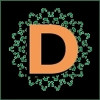Abstract
In the contemporarymoment of 3D printing, immersive digital environments and aesthetic practiceslike projection mapping, I ask whether through these digitally inflectedprocesses we intuit and inhabit a different reality in which not just time andspace, but also material objects, buildings and landscapes seem less consistentand more fluid. Through the theory ofBernard Stiegler, and specifically his concepts of ‘grammatisation’ and ‘tertiary retention’ – by which the tools of expression we have our disposalshape us as subjects in our ability to think and imagine – I posit that digitalvisual technologies synthesise an affectively inhabited ontological landscapein which metaphysical constants are drawn into question.I use examples frompopular film, club visuals (including projection mapping) and art installation(e.g. Musion holographic projection system), to give a sense of a contemporarydigital visual culture which is fascinated, even preoccupied with theinstability of reality. Thematically drawing on quantum uncertainty,holographic universe theory and digital immateriality, these images encouragean immersivity by which affects of metaphysical flux are cultivated within thebody.Going between an ethicalphilosophy of technology from Heidegger and Stiegler to recognisable andpopular forms in contemporary visual culture, I will make a clear case for theaffective re-articulation of reality through digital forms of expression thatshift our ontological coordinates within the ‘real’ world.
How to Cite:
Strutt, D., (2015) “Digital Grammatisation: The Affective Synthesis of Reality by Digital Screen Media”, Dandelion: Postgraduate Arts Journal and Research Network 5(2). doi: https://doi.org/10.16995/ddl.325
Downloads:
Download PDF
756 Views
471 Downloads

